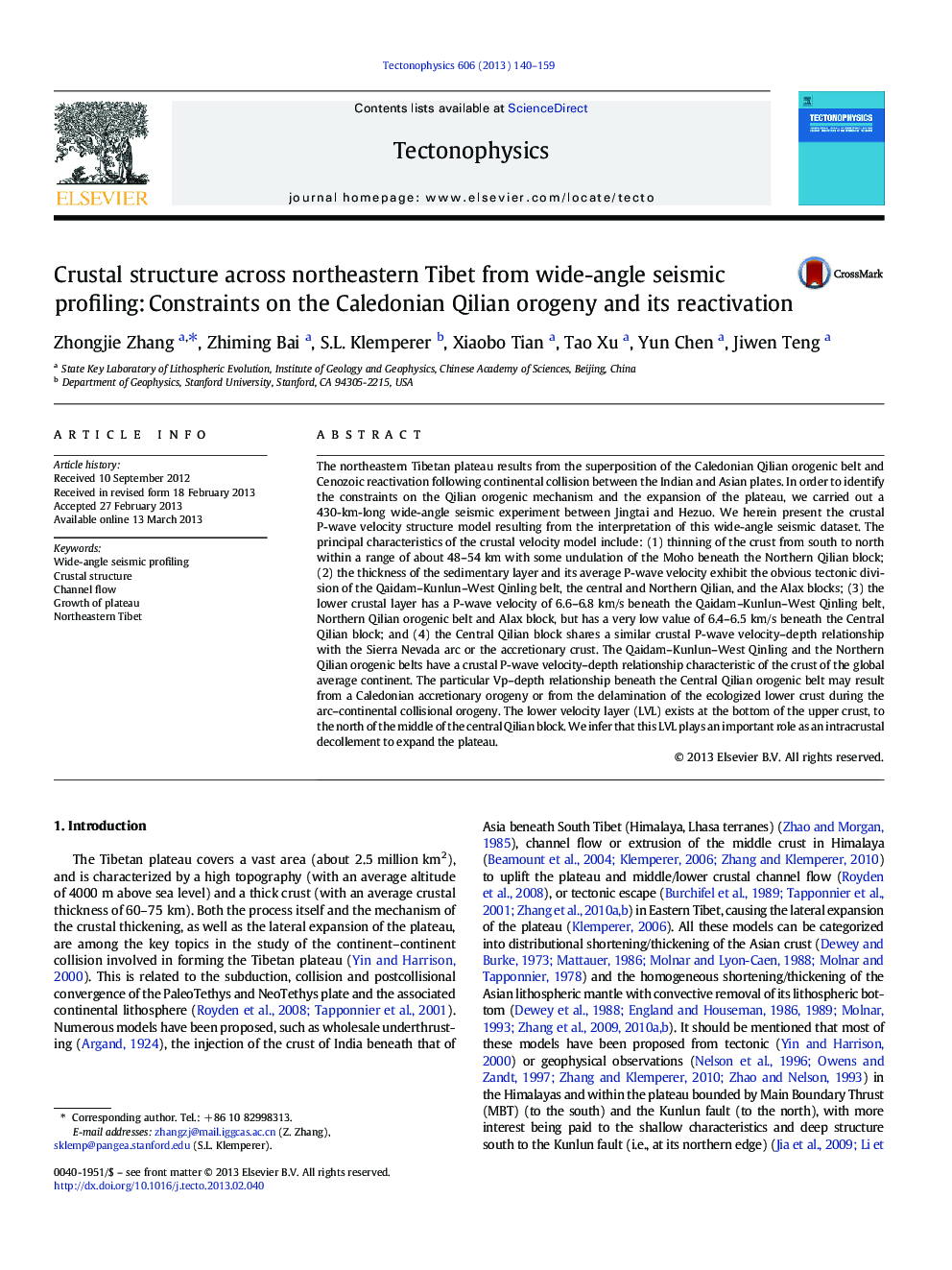| Article ID | Journal | Published Year | Pages | File Type |
|---|---|---|---|---|
| 6434123 | Tectonophysics | 2013 | 20 Pages |
â¢Crustal structure crosses Caledonian orogeny with a 430-km wide-angle seismic.â¢Crust thins from the south to the north of NE Tibet.â¢Crustal property of Central Qilian similar to Nevada arc or accretion crustâ¢Caledonian Qilian orogeny from oceanic crust subduction or accretionary orogenyâ¢Intracrustal decollement links to northeastward expansion of Tibetan plateau.
The northeastern Tibetan plateau results from the superposition of the Caledonian Qilian orogenic belt and Cenozoic reactivation following continental collision between the Indian and Asian plates. In order to identify the constraints on the Qilian orogenic mechanism and the expansion of the plateau, we carried out a 430-km-long wide-angle seismic experiment between Jingtai and Hezuo. We herein present the crustal P-wave velocity structure model resulting from the interpretation of this wide-angle seismic dataset. The principal characteristics of the crustal velocity model include: (1) thinning of the crust from south to north within a range of about 48-54Â km with some undulation of the Moho beneath the Northern Qilian block; (2) the thickness of the sedimentary layer and its average P-wave velocity exhibit the obvious tectonic division of the Qaidam-Kunlun-West Qinling belt, the central and Northern Qilian, and the Alax blocks; (3) the lower crustal layer has a P-wave velocity of 6.6-6.8Â km/s beneath the Qaidam-Kunlun-West Qinling belt, Northern Qilian orogenic belt and Alax block, but has a very low value of 6.4-6.5Â km/s beneath the Central Qilian block; and (4) the Central Qilian block shares a similar crustal P-wave velocity-depth relationship with the Sierra Nevada arc or the accretionary crust. The Qaidam-Kunlun-West Qinling and the Northern Qilian orogenic belts have a crustal P-wave velocity-depth relationship characteristic of the crust of the global average continent. The particular Vp-depth relationship beneath the Central Qilian orogenic belt may result from a Caledonian accretionary orogeny or from the delamination of the ecologized lower crust during the arc-continental collisional orogeny. The lower velocity layer (LVL) exists at the bottom of the upper crust, to the north of the middle of the central Qilian block. We infer that this LVL plays an important role as an intracrustal decollement to expand the plateau.
